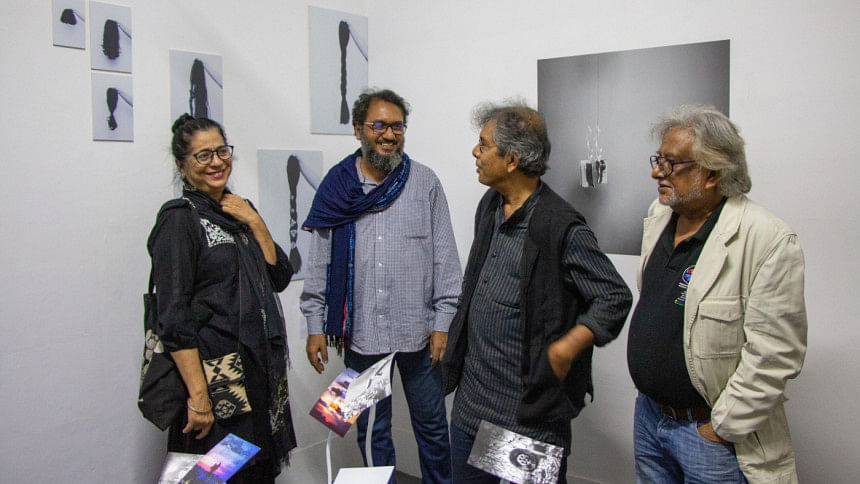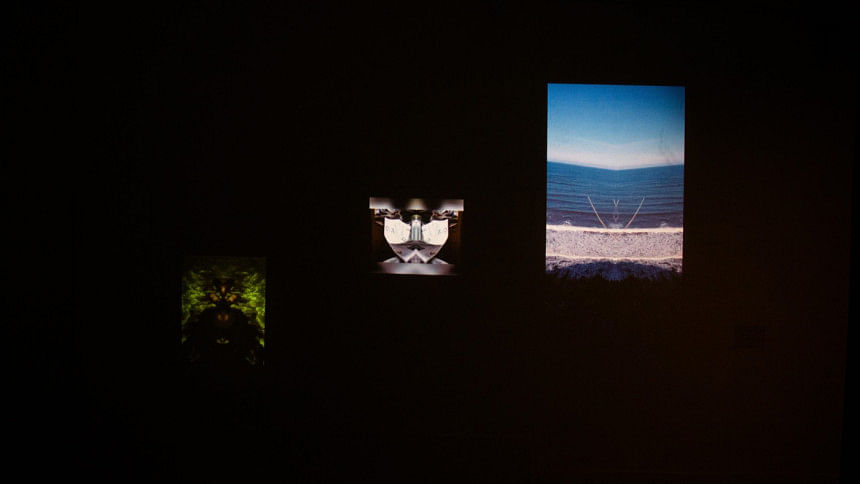In (and out of) the stones of our minds

The traditional role of an art curator is to assemble, catalogue and manage artistic and cultural collections. However, when put in practice, curation may take various forms. Artist, Critic and Curator Mustafa Zaman has a heart-to-heart conversation with The Daily Star, revealing his current concepts of curation. His recent work, In (and out of) the stones of our minds, is on display at Dwip Gallery.
Mustafa Zaman's first exhibition in the 90's was supposed to be a conventional painting exhibition. However, he changed his mind and put forth ground-breaking image installation, using digital materials instead. Use of digital medium was a breakthrough then, now it is a well-accepted medium in the main stream. The curatorial note poses three queries, which had overwhelmed the young minds during that time. Nineteen years into the new millennium, they are still the most contentious issues. "Dilemma is the primary catalyst of my practice now. The surrealist concept of automatism works in me more," says Mustafa Zaman.
Having worked with some African artists recently, Zaman came across the practice of 'unthinking', which in simple terms, refers to going into creative endeavours without any contexts or preconceived notions. "African artists practice 'unthinking' because they do not want to remain in the frame work of western-centric ideas. The discourses behind their works are fascinating. If people knew these discourses, at least those that are relevant to this region, they could have a better understanding. Every creative piece needs to be contextualised," he says.

The spontaneous positioning of body, image, material, and desire are evident in the gallery space of Dwip Gallery. "It is a celebration of what we want to do in this space. In the exhibition, we have artists from the 80s. We are also featuring young photographers, whose works show their vision of social concepts now. They sometimes converge and contradict, but that is the beauty of dialogues," Zaman emphasizes.
The naming of the exhibition was coined from John Lennon's song Mind Games. "The song is striking, it introduced terms like mind guerilla, which essentially is our state. We belong in our minds, more than in the society. I felt this could be a point of departure," he says.
Reading critical images, however, is not an easy job. Is it at all necessary to try to understand each art piece? If yes, then is the artist or the curator to take the lead in it? Zaman answers that interpretation, retelling and conversation on the concept is required, and adds that it is primarily the curator's job. "Communication breakdown is also a part of modern curation. Basic courses on development of art should have been made mandatory in Bangladesh," he asserts.
Visiting exhibitions often churns ideas, concepts and ignites social inquiries. Using memory techniques, you draw upon visual imagination and can help to make mental connections between space and material objects. In (and out of) the stones of our minds will be open at Dwip Gallery till February 29, 2020.

 For all latest news, follow The Daily Star's Google News channel.
For all latest news, follow The Daily Star's Google News channel. 



Comments